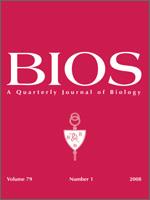Options for field anesthetics are somewhat limited for wild animals, particularly for small game mammals. We evaluated the efficacy of a reversible field anesthetic, “BAM” (butorphanol, azaperone, medetomidine; Wildlife Pharmaceuticals, Inc., Windsor, CO) in yellow-bellied marmots (Marmota flaviventris). BAM is widely used in large game mammals, but has not been tested in smaller animals. We found that 0.20-0.25 mL of BAM was most effective, but marmots were anesthetized using as little as 0.06 mL. We found no relationship between the dosage of BAM and the time to first effects, sternal recumbency time or approachable time. Increasing dosages of BAM to levels at or above 0.20 mL was associated with less excitability and muscle rigidity, as well as a better overall quality of anesthesia. BAM differentially affected vital signs, as heart rates increased considerably during anesthesia; however, these changes lessened with increased time under anesthesia. There was no relationship between heart rate, oxygen saturation or body temperature and the dosage of BAM. Reversal drugs showed a wide dosage range, as additional reversal drugs were generally not required. Marmots were successfully reversed using concentrations of only 0.05 mL/kg atipamezole and naltrexone. Overall, our results indicate that BAM is a safe and effective, easily reversible field anesthetic for use in small game mammals.
How to translate text using browser tools
1 December 2017
Novel use of a rapidly reversible field anesthetic in small game mammals using yellow-bellied marmots ( Marmota flaviventris) as a model organism
Zachary Butler,
Dominick Gamba,
Stephen Morris,
Jennifer Zahratka,
Erin M. Lehmer
ACCESS THE FULL ARTICLE

BIOS
Vol. 88 • No. 4
December 2017
Vol. 88 • No. 4
December 2017
field anesthesia
wildlife anesthesia




